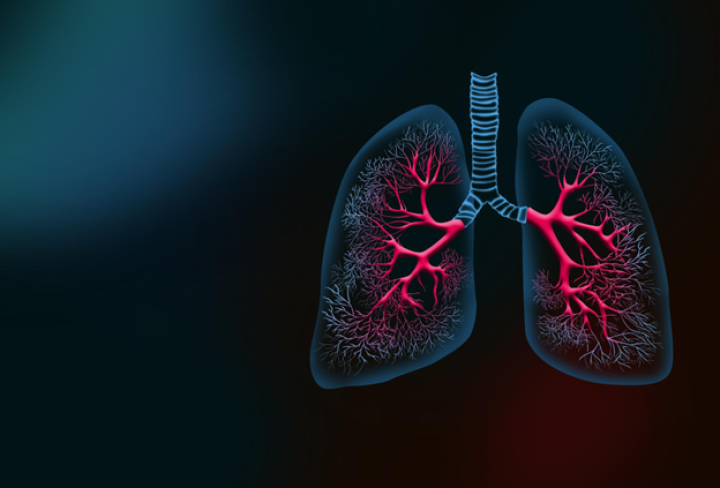In today’s medical world, fibreoptic bronchoscopy plays a key role. It’s essential for diagnosing and treating lung problems. But explaining it to non-experts can be tricky. This guide helps clear up confusion. We’ll walk through what happens during this procedure and why it’s done. By keeping it simple, even those unfamiliar with medical jargon can understand why fibreoptic bronchoscopy is important.
Understanding Fibreoptic Bronchoscopy
So, what is fibreoptic bronchoscopy? It’s a procedure where doctors use a special tool called a bronchoscope to look inside your lungs. Made simple, it’s like looking through a flexible tube with a light and camera. The main tool, the fibre optic bronchoscope, is slender, allowing for easy navigation through airways.
This technique has grown over time. From basics to advanced scopes today, improvements have made it safer and more reliable. For beginners, picturing it like an upgraded telescope for lungs may help. Fibre optic bronchoscopy offers real-time visuals, aiding accurate diagnosis. Understanding its evolution reveals modern medicine’s journey to making lung checks less invasive.
The Fibreoptic Bronchoscopy Procedure
Wondering what happens during the fibreoptic bronchoscopy procedure? Here’s a step-by-step guide:
- Preparation: You’ll get settled in a comfortable position in the exam room.
- Anesthesia: Doctors use fibreoptic bronchoscopy anesthesia to numb your throat.
- Insertion: The scope gently enters your nose or mouth to reach your lungs.
- Investigation: A detailed view of your airways and any issues is captured.
- Sample Collection: If needed, doctors might collect tissue or fluid for testing.
Throughout, the process is smooth, focusing on close examination without discomfort. This method lets doctors peek inside safely and efficiently.
Identifying When Fibreoptic Bronchoscopy is Necessary
But when do you need a bronchoscopy? Various symptoms can require it:
- Persistent cough or coughing blood
- Unexplained lung issues or blockages
- Infections
It’s also vital for both diagnosing and treating conditions. From checking blocked airways to getting tissue samples, fibreoptic bronchoscopy aids in early detection. Spotting issues early can make treatment easier, emphasizing its value in preventing further lung damage.
Preparing for Your Fibreoptic Bronchoscopy
Getting ready for a fibreoptic bronchoscopy procedure involves simple steps. Doctors give clear guidelines to follow. Patients typically need to:
- Fast: Avoid food and drinks for several hours before.
- Medication Review: Share all medicines with your doctor for adjustments.
These prep steps ensure your comfort and safety during the procedure. Knowing what’s allowed will make things run smoothly.
Experiencing the Procedure: What to Expect
During the actual procedure, many wonder about the sensations. You’ll be under fibreoptic bronchoscopy anesthesia which numbs discomfort. Mild sedation helps relax you for a calm experience. The whole thing usually lasts under an hour. In the hospital, the staff ensures you’re comfortable and at ease.
Once it starts, you might feel slight pressure but it’s quick and manageable. Understanding what happens can ease nerves, making the experience less daunting.
Post-Procedure Overview
Recovery begins right after the fibreoptic bronchoscopy. You’ll rest briefly while the anesthesia wears off. Watch for minor effects like a sore throat or cough. These fade quickly. If issues persist, contact your doctor. Results from any samples taken are usually shared in a few days. This timing helps in planning any further steps required for your health.
Advantages of Fibreoptic Bronchoscopy
Why is this procedure favored?
- Minimally invasive: Causes less trauma compared to traditional methods.
- Fast Recovery: Patients often return to normal activities swiftly.
- Versatile Use: Handy for both spotting and treating lung issues.
The advantages of fibreoptic bronchoscopy highlight its comfort and efficiency. Offering clear insights without longer recovery times, it stands out in modern medicine.
Addressing Risks and Misconceptions
What if you’re nervous about fibre optic bronchoscopy? It’s normal. Many worry about discomfort or risks. However, complications are rare. Most fear is due to misunderstandings.
- Minor Risks: Sore throat or slight bleeding.
- When to Contact: Any severe side effects or prolonged discomfort.
Understanding the reality, not the myths, eases worries. Open communication with your healthcare provider is key.
Conclusion
In wrapping up, fibreoptic bronchoscopy remains a crucial tool in respiratory care. It’s praised for early disease detection while being gentle and effective. For anyone facing this procedure, rest assured of its benefits. Trust in modern methods and skilled professionals ensure a smooth journey in managing lung health. Take comfort in knowing what’s ahead, making the process less daunting.

